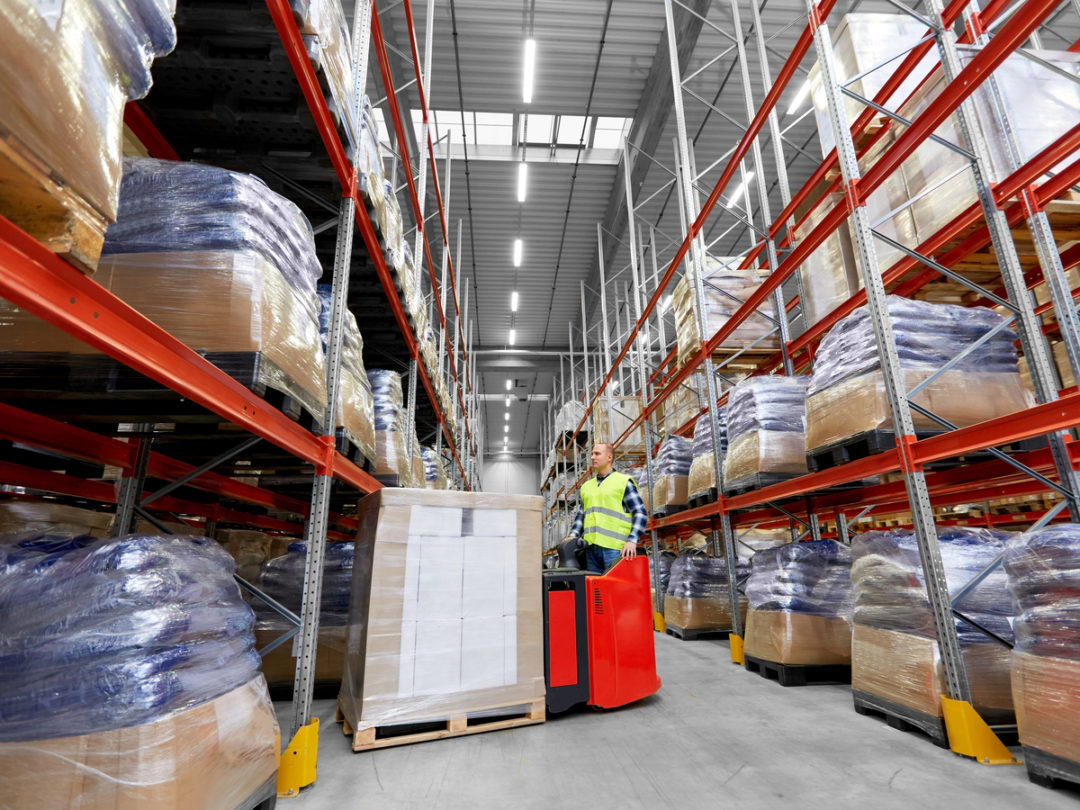
Automated forklifts are designed to do a lot on their own. They can lift, navigate and travel to perform assigned tasks, but they are not as self-sufficient when it comes to service and maintenance. Companies evaluating automated forklifts for use in their applications should consider not only operational objectives, but also how to support and sustain these new members of your forklift fleet with service and maintenance that enable them to meet expected productivity and safety levels.
Whether your forklifts are manually operated, automated, or a combination of the two (i.e., dual-mode technology), effective maintenance and service programs are important in keeping products moving and ensuring equipment performs at desired levels. While many maintenance best practices and requirements for manual forklifts still apply to automated forklifts, key differences need to be understood and addressed to meet performance goals.
Understanding Types of Maintenance
Automated forklift maintenance can be broken into three categories: tasks that confirm operational performance, tasks that maintain the vehicle, and tasks that support software or system maintenance and integrity.
Often, current manual forklift operators are selected to monitor an assigned group of automatic guided vehicles (AGVs) by observing each vehicle’s performance. This reduces the likelihood of interruptions due to environmental issues or dirty sensors.
Automated vehicles have maintenance requirements that are similar to manual forklifts. Maintenance is generally performed by the same individuals that service the manual fleet. There are additional maintenance requirements that are unique to automated vehicles that will require specialized training.
Finally, software and system maintenance for both the vehicle and its traffic manager on the host server is required. The same precautions and protocols to ensure security and performance in a warehouse management system (WMS) also apply to the AGV system’s traffic manager. AGV vehicle maintenance and software maintenance programs are often bundled together and can become part of the monthly maintenance plan with the system provider.
The following will help you better understand the primary similarities and differences as you integrate automated forklifts into your warehouse environment.
Keeping Things Rolling
One of the biggest differences you will notice with automated forklifts is the number of sensors found on the inside and outside of the vehicle, which helps ensure safe and effective operation. While many of today’s sensors are now integrated into the lift truck and better protected than technology that is bolted on, they still need to be properly maintained and serviced. This includes ensuring sensor lenses are clean and remain clear of obstructions to enable the lift truck to navigate safely and accurately throughout the facility. As noted earlier, many companies train existing warehouse employees for such tasks, typically those who previously operated manual forklifts.
Beyond the forklift, it is important to pay attention to the environmental issues that can cause system errors. When a worker assigned to managing a group of AGVs approaches a vehicle that needs intervention, they need to note if the error is caused by the load, environment, vehicle, or other reason. They can then choose to correct the problem, for instance, by removing loose dangling shrink wrap from a pallet, or removing an obstruction in the travel path and resuming operation. Once the vehicle is restarted, it is important to observe the AGV’s movement to confirm continued automated operation.
Integrating Into Existing Preventive Maintenance
A Dual-mode automated forklift features many of the same mechanical parts and components as a manual forklift. For instance, there is typically no difference in the batteries, tires, wheels and many other components used in manual and automated vehicles. Knowing this, you should incorporate AGVs into your regular service and maintenance programs and processes. It is crucial your automated fleet is regularly inspected for any issues or needed repairs, and critical components should be serviced per your equipment provider’s recommendations and guidelines. Don’t let the driverless nature of an automated forklift dismiss the need for pre-shift safety inspections that an operator would normally perform.
Before adopting an automated fleet in your warehouse, you should have an in-depth conversation with your provider about the maintenance and service needs of the automated vehicles. If your provider already services and maintains your fleet, they should be able to add the automated forklifts to your service agreement to reflect how they are used in your application. If you decide to use your in-house maintenance team, be aware that additional training is required to enable technicians to proficiently service the unique features of automated forklifts. Your vehicle provider can typically provide this additional training.
Damaged sensors must be replaced and calibrated to ensure the integrity of the AGV’s operation, an exercise performed by knowledgeable and trained technicians. The technician will also inspect and maintain the additional wiring and electronics integrated into the vehicle to enable it to function without an operator. This requires technical knowledge of the location, form and function of each component and the entire navigation system.
One final difference considers how automated forklifts are used. Most automated vehicles are deployed to complete very consistent, repetitive tasks, often in secure locations of the warehouse. This consistency of performance and isolation can reduce the possibility of impacts and the associated damage they may cause but, at the same time, may actually increase hourly usage. These factors should be considered when outlining service procedures for automated vehicles.
By communicating regularly with your forklift provider, you also can gain insight into parts inventory and any supply chain issues that might affect it. This allows you to accurately plan and prepare for when you should service a vehicle’s sensors and components based on parts availability.
As with your manual forklifts, document every maintenance issue that occurs with your automated vehicles over time, including the cost of each repair or service. Fleet management software can help facilitate this tracking exercise. List all the planned maintenance work orders and breakdowns in the year and determine the planned maintenance to breakdown ratio. You can get the average cost per model from your forklift provider and use it to benchmark your fleet. You can use this information to help you identify trends, be more proactive about repairs, and properly and efficiently address issues.
Gaining System Expertise and Insight
Additionally, connected technology and forklift telematics can be a powerful tool to help ensure manual and automated forklifts are performing as designed to support productivity and safety standards. This is critically important in the case of automated forklifts, where the expectation is that they will be in near-continuous operation. A wealth of data can be gathered from forklift telematics systems, including data on equipment and battery status, performance and health, which can provide a better understanding of how the fleet is operating.
These telematics systems can provide another important benefit because vehicle and system errors can easily be shared directly with your service provider. Otherwise, this data may only be available by accessing the information on-site in the AGV system traffic manager. Your service provider will not have access to this data until they arrive on-site, limiting their ability to arrive with potential resolutions in mind.
Using data analytics, you can unlock the potential of all this information, including operational data, event codes and impact alerts. Currently, connected service technicians, armed with advanced technology and increased connectivity, are helping make forklift service calls smarter and more proactive.
There are also operations today tracking the maintenance history for each lift truck to support its ability to meet targeted productivity levels. They are tracking every maintenance issue with the lift truck, including the cost of each repair or service and work orders for all planned and unplanned maintenance. The information is used to help determine the planned maintenance-to-breakdown repair ratio, identify trends, and enable a more proactive approach to repairs that addresses issues properly and efficiently.
As forklift automation continues to become more widespread, the future of warehouse technology will continue to evolve. While the capabilities of automated forklifts expand and you consider how they might fit into your application, it is important to understand their support requirements and commit to the training and resources necessary to ensure a successful implementation.
Jim Gaskell is director of global automation and emerging technologies at Crown Equipment.







